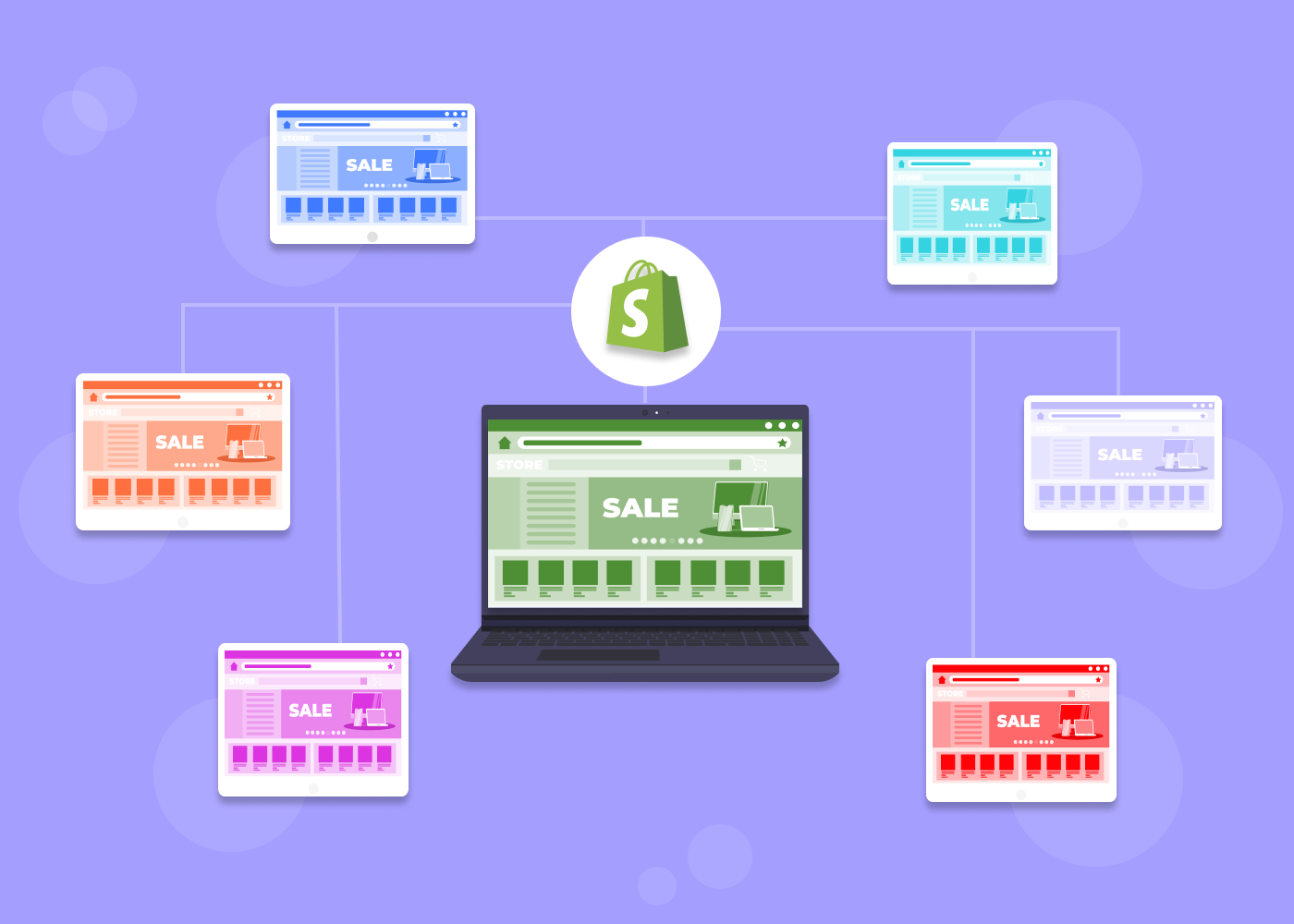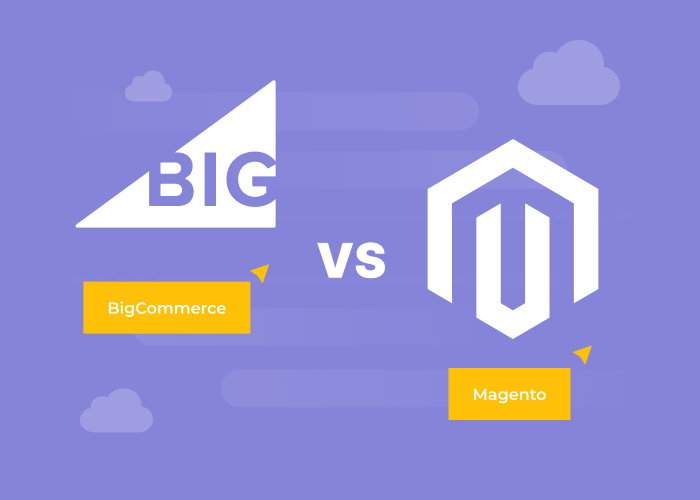Content
Push Notifications vs. SMS vs. Email For Connecting with Your Customers

Modern e-commerce businesses use multiple channels to communicate with their buyers. The best online retailers know exactly when to use SMS, push notification and email. Each channel has its own pros and cons.
Below, we’ve compiled all the information you need to choose the best communications channels for your store. We’ve also made a table to compare all three channels, and a few money-saving tips for your marketing plan. Let’s start!
Every e-commerce operator wants to find the best communication channel to maximize their visitor engagement. The key is to make it convenient and desirable for customers to interact with your store.
Also read: Best Conversion Rate Optimization Tips for Your Ecommerce Website
The Best Way to Reach Customers
SMS, push notifications and e-mails are three of the most common ways online shops communicate with their customers. However, it’s not always easy to choose one channel over another. Your goal should always be to provide the right information to your shoppers, without annoying them with spam.
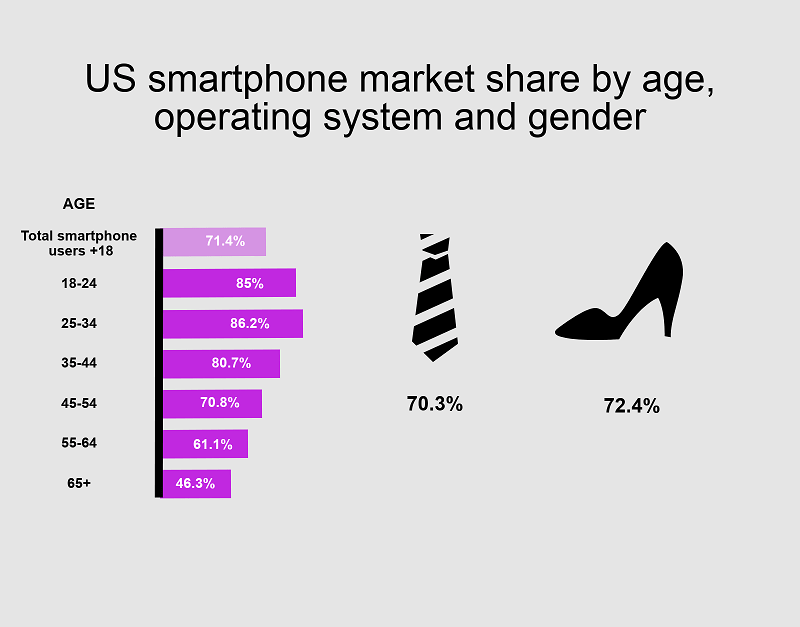
SMS has been around for decades, but the latest mobile devices add a new wrinkle to the mix: push notifications. Between these two channels, the penetration rate for Gen Y customers is 85%. Online shop owners should feel empowered to interact with their shoppers anytime their phones are charged.
With that out of the way, let’s run down the advantages and disadvantages of each channel: SMS, push notifications and e-mails.
Pros and Cons of Email
It’s hard to imagine an online shop communicating with its customer without using emails. Despite its ubiquity, though, there are some drawbacks to this channel.
Ecommerce operators typically use email to solicit feedback from their customers. It’s also often used to notify shoppers about changes to their user account, or other important announcements. Websites also use email to verify their visitors’ email addresses and to facilitate safe password changes. We would like to emphasize that email is a crucial piece of eCommerce operations.
However, is it a good idea to use email as a marketing channel, and as a way to advertise special offers? The answer is yes, it is a very good idea, as long as your special offers are not time-limited. The reason for this is that your emails may sit unread in the inbox for some time before the recipient opens them.
So, it’s best not to use this technique for news that needs to be read immediately. For example, you should never use email for order status updates.
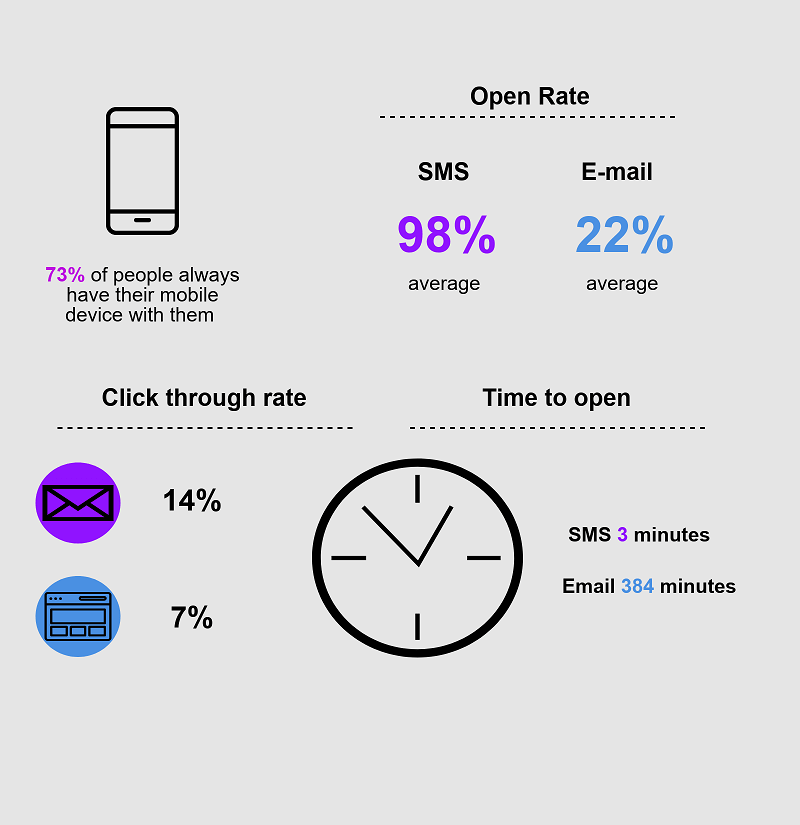
Emails also typically have a lower open rate than push notifications and SMS. However, the marketing gurus at HubSpot report that properly used, emails can increase your ROI.
Email works better on mobile than on desktop. Although marketing emails have only a 15% open rate on desktop, it rises to 50% on mobile. When developing your marketing strategy, keep in mind that most modern users read their emails on mobile-first. It’s more important than ever to use responsive email templates.
Email Advantages
- No limits on the size or length of messages
- Customers can keep messages to refer to later
Email Disadvantages
- Expensive
- Low open rate
- Unsuited for time-sensitive information
Pros and Cons of SMS
SMS has an amazing open rate of 90%, with most people checking a new text within minutes. It’s one of the most effective ways to interact with your eCommerce shoppers. Properly used, SMS is an amazing marketing channel that every online store owner should use.
The best eCommerce businesses use SMS for time-sensitive information, like flash sales, item deliveries, and discounts. It’s also very popular as a means to enable two-factor customer authentication.
SMS allows you to interact with your customers not just with text, but also with pictures and video. However, you should always keep in mind the 160-character limit. For maximum impact and efficiency, keep your messages short.
Also read: How to Launch a Successful e-Commerce Website: The Ultimate Checklist
A note of caution: Be careful inserting links in SMS messages. Customers might not always open them, particularly if the messages reach customers when they don’t have an Internet connection.
Finally, SMS is unsuited for secure information like account details. Most people receive many, many SMS messages, and they’re difficult to search. Sometimes they’re even deleted.
The main drawback of SMS, though, its price. Let’s run through the numbers.
A typical price for sending one message in the US is $0.0070. If your client base is 200,000, then sending a single message to each customer would be $1,400. On a cost basis, when comparing SMS vs email marketing, email is the clear winner.
SMS Advantages
- High open rate, often within minutes
- Does not require the customer to have an Internet connection
SMS Disadvantages
- Pricey
- Almost impossible to calculate the conversion rate
- Strict 160-character limit
Cons and Pros of Push Notifications
Push notifications are one of the most cutting-edge ways to reach online shop customers. They have become very popular over a relatively short period of time. They began in social media, but with the advent of mobile apps, they have become a part of everyday life for most mobile device users.
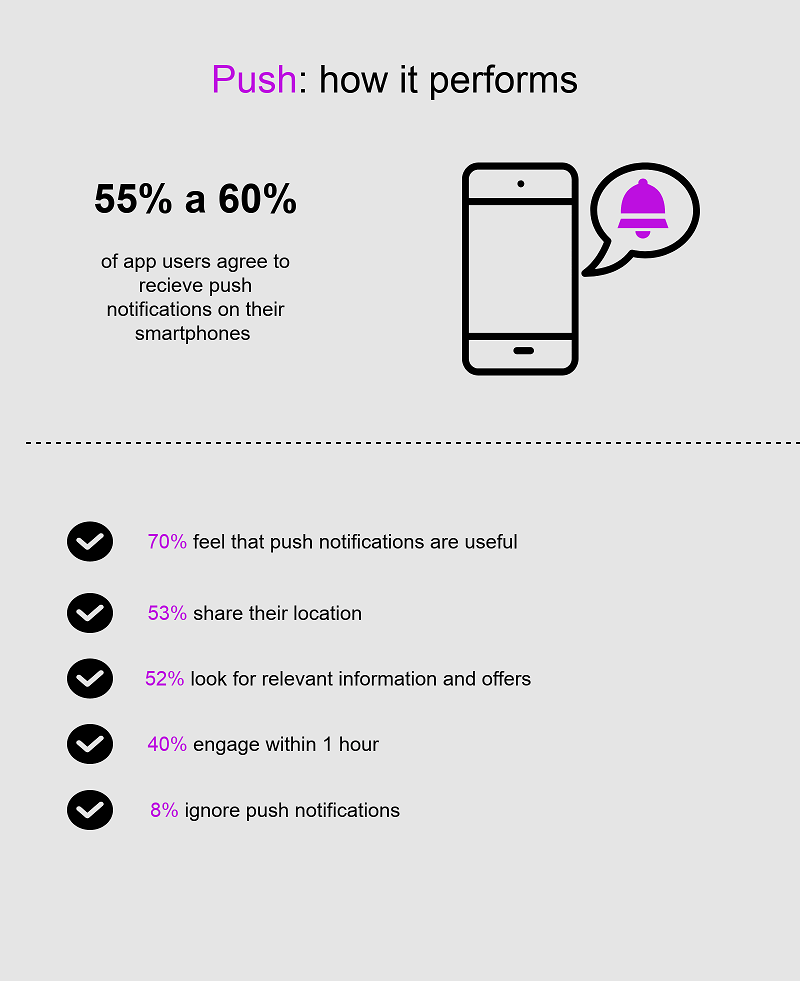
Making an SMS and push notifications comparison, we’ve found that both have a very high open-rate. However, it’s possible to use advanced analytical tools to measure the conversion rate of their push notifications. This remains difficult with SMS.
Another advantage of push notifications is that, simply put, they are less annoying than SMS. Mobile device users see their push notifications appear unobtrusively in the status bar, where they do not interrupt user activity. It’s also easy to delete them. This makes them more convenient, but also renders them suitable only for quick updates and news.
Also read: Does your business need mobile website or app?
Most eCommerce business owners who implemented push notifications in marketing strategy report improved conversion rates. Techniques like deep links allow you to direct customers to particular pages in your eCommerce store. For example, when sending a push notification about a sale on a specific product, you can use the notification to lead customers directly to the product page. This is a huge advantage for online businesses, and one more difference between push notifications vs SMS.
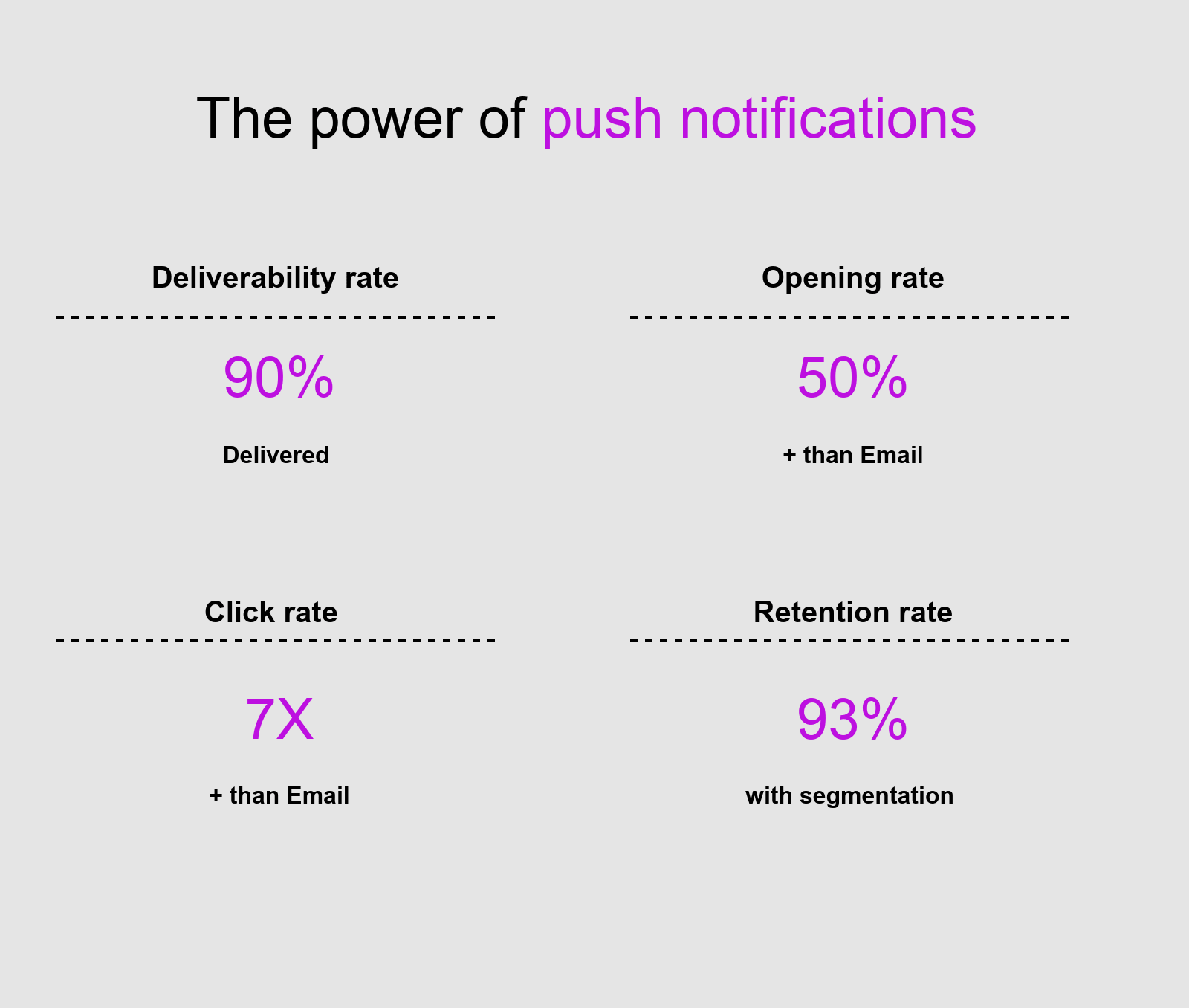
One of the chief advantages of push notifications is their customizability, which allows online retailers to target them according to a wide range of specific parameters. For example, you can target notifications according to gender, product preferences, or location. This allows you to send personalized notifications to your customers, increasing the chance that they’ll follow the link.
If you’d like to increase your push notification open rate, even more, consider rich push notifications. These are a special kind of notification that increase customer engagement by including videos, gifs, maps, or pictures.
Also read: How to Create a Successful Two-Sided Marketplace
So, what is the cost of push notifications? You’re probably thinking that your online shop needs to use this channel if you can afford it, and we have some good news.
They’re free.
You can use services like Firebase or Urban Airship to send push notifications to a very high number of users completely free of charge.
Push Notification Advantages
- High open rate
- Deep-link to specific pages on your site
- Quickly reach your entire customer base
- Rich notifications can use media files
- Free for most use cases
Push Notification Disadvantages
- Limitation on characters
- Some technical knowledge or paid app development needed
Email vs. SMS vs. Push Notifications – Which is Best for Ecommerce?
All three channels are great for their own purposes. When you’re deciding how to engage with your customers, keep in mind the pros and cons of each.
- Email is great for sending long messages like account details or other important information.
- SMS is expensive but will work even if your customer doesn’t have a smartphone.
- The main difference between email and push notification is that the latter will reach active app users, but require you to develop or pay for an eCommerce app.
Keep reading for a table comparing the features of email, SMS and push notifications. This should give you a clear vision of which communications path your eCommerce business needs.
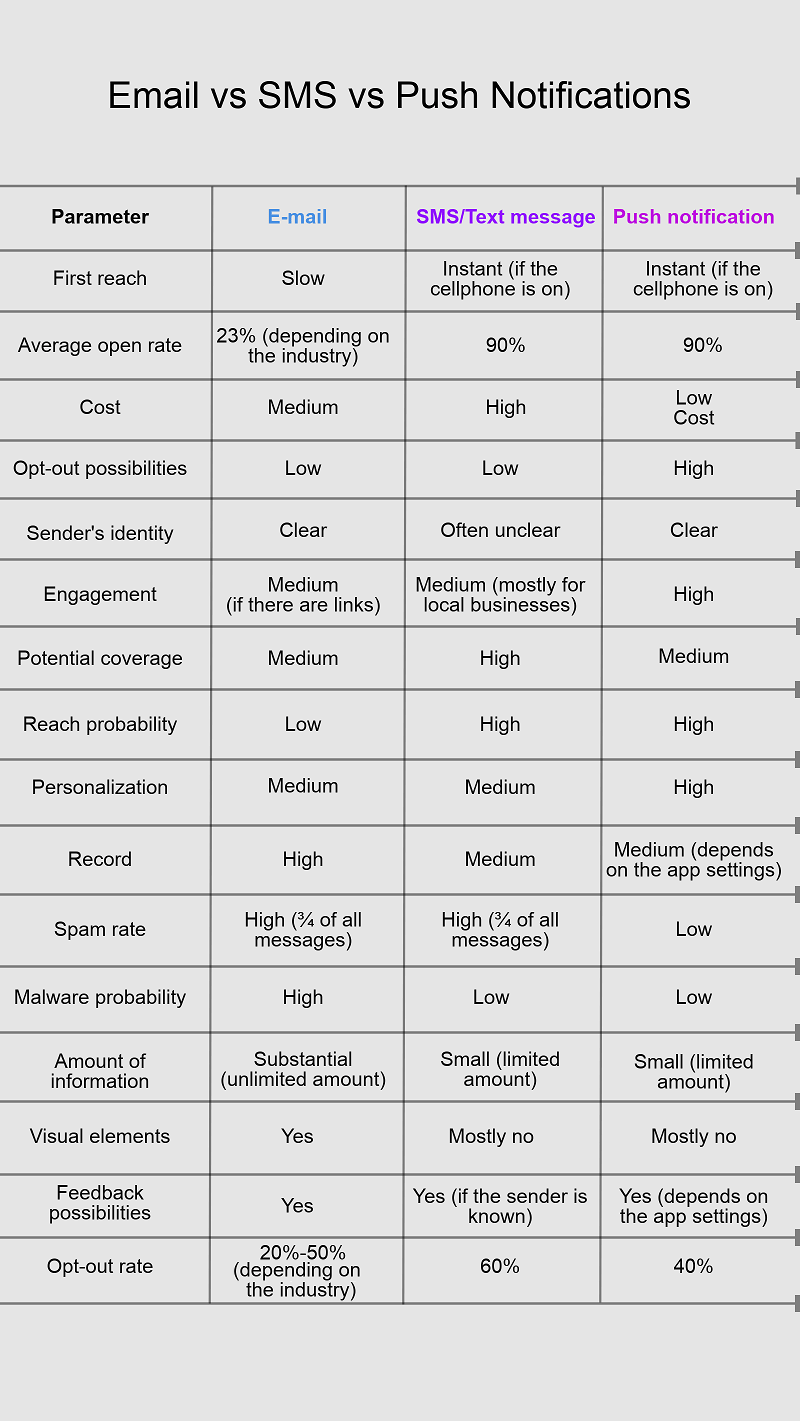
E-mail vs. SMS vs. Push notifications – How to Save on Marketing
As any online business owner, you’re probably interested in saving on your marketing budget. As we said earlier, push notifications are typically free, and so is the best option from a pure cost standpoint. If you have a large client base, relying on SMS for your marketing activities will cost a fortune. Email can also be expensive and has the lowest open rate of all three channels.
If you are developing a marketing strategy based on push notifications, remember to budget for app development. However, considering the advantages of combining push notifications and eCommerce business, it is well worth the upfront cost.
Here are some more push notification features that will help your bottom line:
- Advanced analytics
- The opportunity to launch a new market
- Location-based marketing activities
- Leveraging the native functionality of a mobile device
If you’d like to include push notifications in your marketing strategy, but aren’t ready to rely on them exclusively, consider developing a cross-platform app.
Email vs. SMS vs. Push Notifications - Price Comparison
The cost of email marketing depends entirely on the size of your client base. As the base grows bigger, the price goes higher. On average, email marketing costs from $150 - $1,100 per month.
The costs involved in SMS marketing also depend on the size of the client base, with the added wrinkle that different SMS providers each offer additional services at different prices. As a ballpark figure, SMS marketing to 1,000 contacts would cost between $500 - $4,000 per month.
Push notifications are practically free except in the very largest applications. Most providers offer one million free push notifications, then charge just $1 per additional million.
Conclusion
In this article, we compared push notification vs email and SMS, focusing on what each channel brings to the eCommerce industry.
As we’ve said, push notifications are the most cost-effective option. However, your shop will still need other ways to communicate with customers. Remember that each channel has its own strengths, weaknesses, features, and purpose.
How Dinarys Can Help
As eCommerce experts, the Dinarys team is ready to provide a wide range of services. We were ranked the 3rd best ecommerce agency at E-Commerce Berlin Expo 2018.
Our services include:
- Ecommerce website development from scratch
- Custom website design
- Ecommerce mobile app development
- Responsive email template development
If you’d like to learn more about our services, just fill out the form and we’ll be in touch ASAP.
Lassen Sie Profis Ihre Herausforderung meistern
Unsere zertifizierten Spezialisten finden die optimale Lösung für Ihr Unternehmen.

